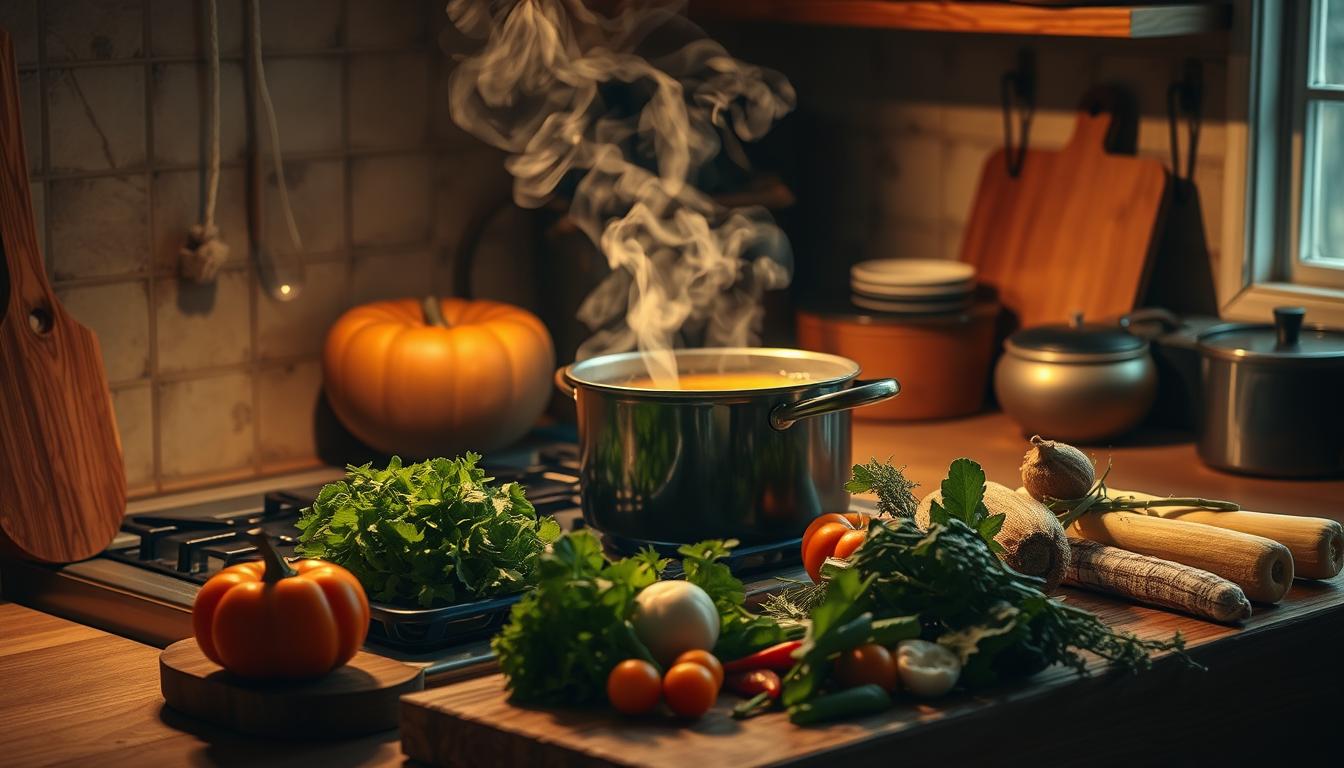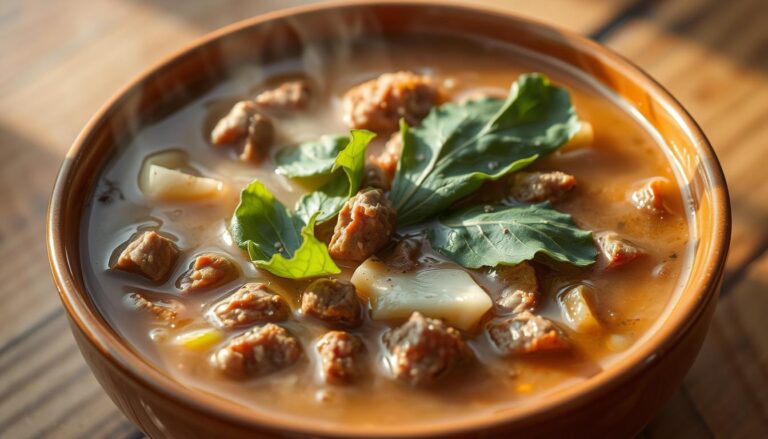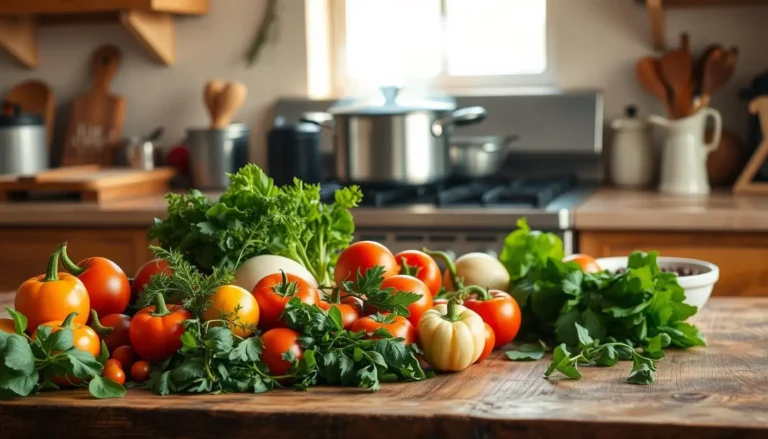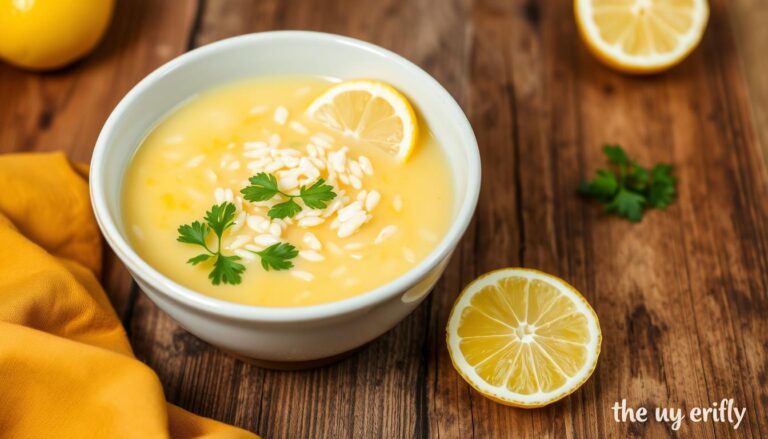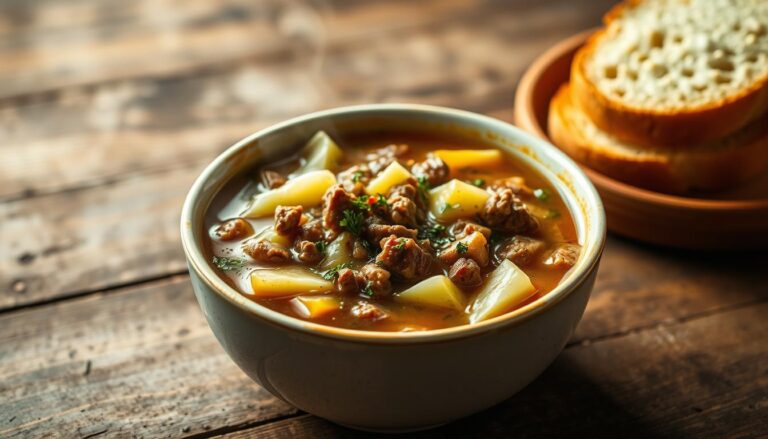Abiotic Factor Soup Recipes – Understanding the Concept
Surviving in Abiotic Factor is not just about fighting. It’s also about mastering cooking. The game’s cooking mechanics turn simple ingredients into meals that can save your life.
Abiotic factor soup recipes are more than a cooking challenge. They are a strategic way to manage your character’s resources and health. Players want more depth in cooking, looking for recipes that give them not just food but also combat buffs.
Knowing how to make environmental condition recipes is key. In Abiotic Factor, every soup you make is a tactical choice. With limited resources and survival challenges, your cooking skills can take your gameplay to a new level.
The game’s cooking system is like real-world survival techniques. By trying out different ingredients and seeing how environmental conditions affect your recipes, you’ll learn skills that go beyond the game.
Whether you’re a gamer or a survival enthusiast, Abiotic Factor’s soup crafting system is an immersive experience. It combines culinary creativity with strategic gameplay. Get ready to explore the world of survival cooking.
Table of Contents
Understanding the Basics of Survival Cooking
Survival cooking in Abiotic Factor needs careful planning and skill. You start by learning to make non-living ingredients soup. This soup represents different ecological factors.
To begin, you must learn cooking skills beyond basic survival. You need a cooking skill level of at least three to make soups. So, it’s important to work on improving your skills.
Essential Cooking Skills
Improving your cooking involves several strategies:
- Practice collecting ingredients from nature
- Discover new recipe combinations
- Understand what each ingredient does
- Manage your resources wisely
Basic Equipment Requirements
Your cooking kit should have:
- A portable cooking station
- Measuring tools
- Containers that can handle heat
- A crafting bench for recipe research
Critical Water and Heat Management
Water is key in your soup. Collecting and managing water and heat is vital. You need to balance these to make healthy and useful recipes.
Learning these survival cooking basics will help you make advanced recipes. These recipes will give you the nourishment and skills you need in Abiotic Factor.
The Importance of Cooking Level Progress
Mastering cooking levels in Abiotic Factor is key to survival. You start at Cooking Level 3. Here, you unlock recipes that keep you going in tough times.
As you move up, you learn to make complex soups. These soups offer more than just food. Each level opens up new ways to mix ingredients and improve your cooking.
- Cooking Level 3: Unlock hearty soups with improved restoration
- Cooking Level 10: Access baking and expanded food options
- Progression increases food restoration efficiency
Your cooking journey has many benefits:
- Enhanced Survival Skills: Make soups that give you temporary boosts like Lightfooted and Heightened Senses
- Ingredient Diversity: Expand your recipe knowledge from simple to complex dishes
- Resource Management: Learn to produce food sustainably
Players suggest trying different food sources and ingredients. Hunting Anteverse II critters, breaking down deep fish for salt, and growing super tomatoes can boost your cooking.
Pro Tip: Avoid cooking burnt food, as it provides minimal nutrition and can lead to dehydration.
Essential Tools for Soup Making
Making the perfect soup needs careful prep and the right tools. Knowing about water chemistry and sunlight in soup making is key for survival cooking fans.
When you’re cooking outdoors, you’ll need some basic tools for making tasty soups. The quality of your water is very important. It affects how your soup tastes and feels.
Portable Stove Setup Guide
Your portable stove is the heart of outdoor cooking. Here are important things to think about when picking and setting up your stove:
- Altitude-based boiling point adjustments
- Fuel efficiency
- Compact and lightweight design
- Wind protection capabilities
Soup Bowl Crafting Instructions
Making the perfect soup bowl means knowing about materials and the environment. Choose containers that can handle different temperatures and radiation.
Water Collection Methods
Collecting water well is key for making good soup. Here are some ways to do it:
- Rainwater harvesting
- Condensation collection
- Stream and river filtering
- Underground water sources
Learning these tools and methods will help you make nutritious soup. This will support your survival and improve your cooking skills.
Abiotic Factor Soup Recipes
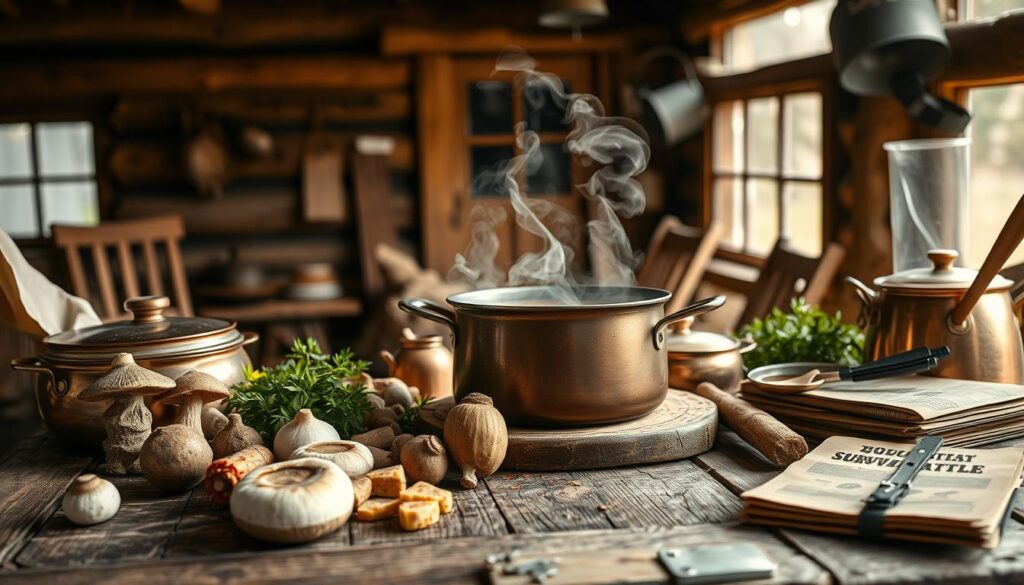
Explore survival cooking with unique humidity recipes and wind patterns soup. These dishes bring environmental dynamics to life. Players can now enjoy culinary experiences that go beyond just eating.
The game’s soup crafting system offers a wide range of recipes. These recipes capture the essence of environmental interactions. To become a master soup creator, you’ll need to understand key principles:
- Minimum Cooking Skill Level: 3 (Soupsmith)
- Essential equipment: Pot and Crafting Bench
- Ingredient quality determines soup effects
Your humidity recipes will show moisture’s critical role in ecosystem simulation. Players can experiment with ingredients that represent different hydration levels. This creates soups that demonstrate complex environmental interactions. Wind patterns soup adds another layer of complexity, allowing you to craft dishes that symbolize atmospheric movement and climate dynamics.
Beware of dangerous combinations! Some ingredient mixtures can produce harmful results:
- Toxic Soup: Made with Plastic Scrap or Rotten Food
- Killer Soup: Contains Tech Scrap or Flass
- Poop Soup: Strictly avoid using Feces
With dedicated practice, you’ll unlock more sophisticated recipes. These recipes provide unique skill boosts and survival advantages. The community’s passion for soup crafting continues to drive innovation and excitement in this immersive culinary experience.
Beneficial Effects of Well-Made Soups
In the world of Abiotic Factor, making the perfect soup is more than just food. It’s about using your skills to improve your survival. By creating special recipes, you can change your experience in the environment.
Making soups is not just about eating. It’s a way to boost your character’s abilities. The right mix of ingredients can give you big advantages, beyond just filling your belly.
Hunger and Thirst Management
Different soups have unique benefits for your survival needs:
- Sustenance Soup provides 20 Hunger and 20 Thirst points
- Sweet Porridge restores 23 Hunger and 32 Thirst
- Meaty Stew delivers 62 Hunger and 20 Thirst
- Hearty Stew replenishes 52 Hunger and 46 Thirst
Skill Boost Properties
Your soup recipes can also boost your skills:
- Quick Reflexes buff offers 10% boost to Reloading and Accuracy XP
- Heightened Senses accelerates Blunt and Sharp melee weapon XP by 10%
- Big Brain buff grants additional 15% EXP for all activities
Duration of Effects
The soups you make can give you temporary but strong buffs. The Souper Satisfied buff helps you eat and drink less. The Boudacious buff lets you carry more without losing speed.
Learning to make soups is key in Abiotic Factor. Your creativity in the kitchen can help you survive and even thrive in tough places.
Ingredient Sourcing and Preparation
Making a great non-living ingredients soup needs smart ingredient picking and careful prep. Your soup’s success depends on choosing the right stuff that shows off the environment. Knowing how to get and prepare these ingredients makes cooking better.
When picking ingredients for your ecological factor soup, keep these tips in mind:
- Find clean water sources like streams or boiling stations
- Pick edible plants that are not too dirty
- Look at how fast ingredients spoil and their nutritional value
- Choose ingredients that stay good for a long time
How you prepare your soup is very important. You need at least a cooking skill level of three to make a good ecological factor soup. Some good ingredients include:
- Canned peas (Hunger Fill: 10, Thirst Fill: 8)
- Military M.R.E. (Hunger Fill: 20, No decay)
- Super Tomatoes (Hunger Fill: 20, Thirst Fill: 20)
More skilled cooks can try making Bland Pea Soup or Sustenance Soup. These recipes can help you get better at cooking. Remember, picking the right ingredients and preparing them well are crucial for a healthy and skill-boosting ecological factor soup.
Environmental Conditions Impact on Cooking
Crafting climate recipes needs a deep understanding of how the environment affects cooking. The balance of soil composition soup depends on many external factors. These factors can greatly change the quality of ingredients and cooking results.
Survival cooking requires paying close attention to environmental variables. Different climates bring unique challenges for making nutritious meals.
Temperature Considerations
Your cooking plan must adjust to temperature changes. Extreme temperatures can change how ingredients react and cooking methods:
- High temperatures can break down ingredients faster
- Cold areas need longer cooking times
- Keeping a steady heat helps keep nutrients in food
Radiation Effects on Ingredients
Radiation can change the molecular structure of ingredients. Knowing this helps create climate recipes that keep nutrients intact.
- Keep sensitive ingredients away from direct radiation
- Use methods to protect food from radiation
- Watch how much radiation ingredients are exposed to
Storage Solutions
Storing food properly is key to keeping soil composition soup quality. Different environments need special ways to preserve food:
- Use insulated containers to keep temperatures steady
- Vacuum sealing keeps moisture out
- Layering ingredients helps preserve them better
Learning these environmental cooking tips helps you become more adaptable and skilled. You can cook beyond traditional limits.
Advanced Soup Crafting Techniques
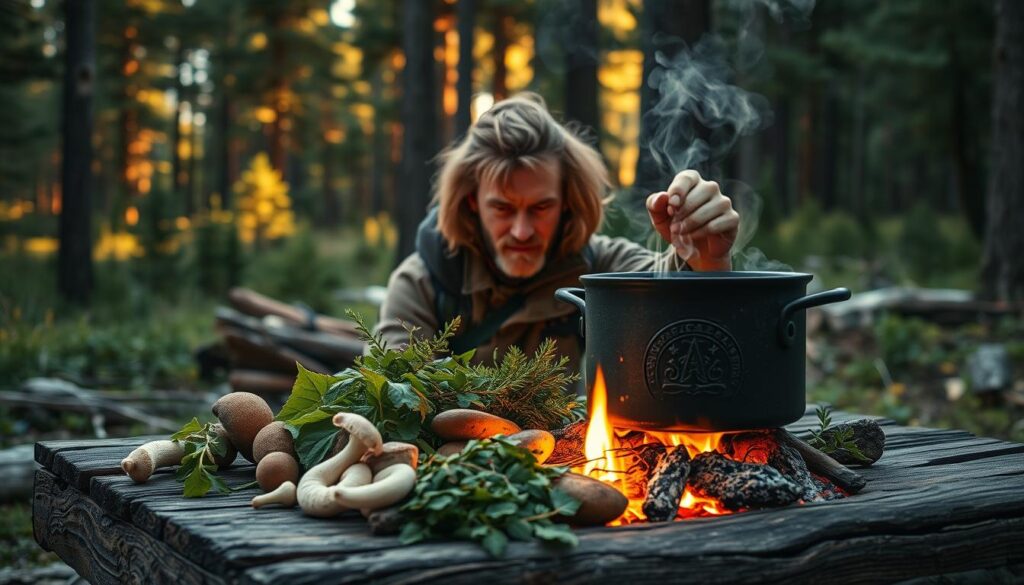
As you explore survival cooking, learning advanced water chemistry recipes is key. These recipes help you make complex soups. You need to think strategically and choose ingredients wisely.
Getting better at soup crafting means understanding complex water chemistry. This turns simple ingredients into powerful meals. To improve, try these techniques:
- Experiment with layered ingredient combinations
- Monitor precise water chemistry interactions
- Understand sunlight levels soup preparation methods
- Track ingredient transformation potential
The best survival chefs make sunlight levels soup that shows off nature’s details. They pick ingredients carefully and use precise cooking methods. These methods show how ecosystems work together.
As you get better, your crafting techniques will grow. By practicing, you can unlock more complex recipes. This happens when you understand how ingredients react in different conditions.
Mastering advanced soup crafting is about understanding the delicate balance between ingredients, water chemistry, and environmental factors.
Here are some tips for making advanced soups:
- Analyze ingredient properties
- Understand temperature interactions
- Track nutritional transformations
- Experiment with rare ingredient combinations
Your journey in soup crafting depends on paying attention, thinking ahead, and trying new things. This is how you grow.
Avoiding Common Cooking Mistakes
When making humidity recipes and wind patterns soup, you need to pay close attention. Knowing common mistakes can help you cook better and safer, even in tough conditions.
Survival cooking is complex. You must know about risks and how to avoid them. Making mistakes can ruin your meal.
Dangerous Ingredient Combinations
Some ingredients don’t mix well in humidity recipes. Be careful with these bad pairs:
- Mixing incompatible radiation-exposed ingredients
- Combining moisture-sensitive components in wind patterns soup
- Using contaminated water sources
- Neglecting proper temperature control
Radiation Management Strategies
To stay safe from radiation, choose ingredients wisely. Know how much radiation your ingredients have.
Safety first: Always check if your cooking area and ingredients are safe from radiation.
Essential Food Safety Guidelines
Follow these key safety tips to keep yourself safe while cooking:
- Always use clean water sources
- Check ingredient integrity before use
- Maintain proper cooking temperatures
- Store prepared food in sealed containers
- Inspect ingredients for signs of contamination
By sticking to these rules, you’ll lower the risks of cooking in tough places.
Recipe Documentation and Management
Tracking your abiotic factor soup recipes is key for survival and skill growth. A detailed recipe journal helps you see how environment and cooking are linked.
Your documentation system should note important recipe details. This way, you can improve your cooking and learn from past experiences.
- Record precise ingredient measurements
- Note environmental temperature
- Document cooking technique
- Track ingredient source location
- Capture preparation method
Creating a detailed system for documenting recipes is important. Think about making a template to keep all the necessary info in one place.
| Recipe Element | Documentation Details |
|---|---|
| Ingredients | Specific type and quantity |
| Environmental Conditions | Temperature, humidity, radiation levels |
| Cooking Process | Method, duration, heat source |
| Outcome | Taste, nutritional value, skill points gained |
Your recipe journal is a treasure trove of knowledge. It shows how environment affects your cooking. By tracking each try, you’ll get better at survival cooking.
Knowledge is your most powerful ingredient in mastering abiotic factor soup recipes.
Whether digital or physical, the choice is yours. Pick what feels right for your survival setting. The aim is to have a system that helps you keep getting better at cooking.
Conclusion
Your journey into ecological factor soup recipes is a blend of survival skills and environmental science. These climate recipes teach you more than just how to cook. They show how ingredients and the environment work together.
Every soup you make shows your ability to adapt and be resourceful. By learning these ecological factor soup techniques, you’ve gained important skills. These skills are useful not just in the kitchen but also in survival situations.
Keep practicing these climate recipes. Remember, cooking is always evolving. Your experience with ecological factor cooking will help you make the most of limited ingredients. Always be curious and see each recipe as a chance to learn more.
The knowledge you’ve gained about ecological factor soups is more than just about food. It’s about understanding complex environmental systems. Your culinary journey has turned cooking into a fascinating scientific exploration.

